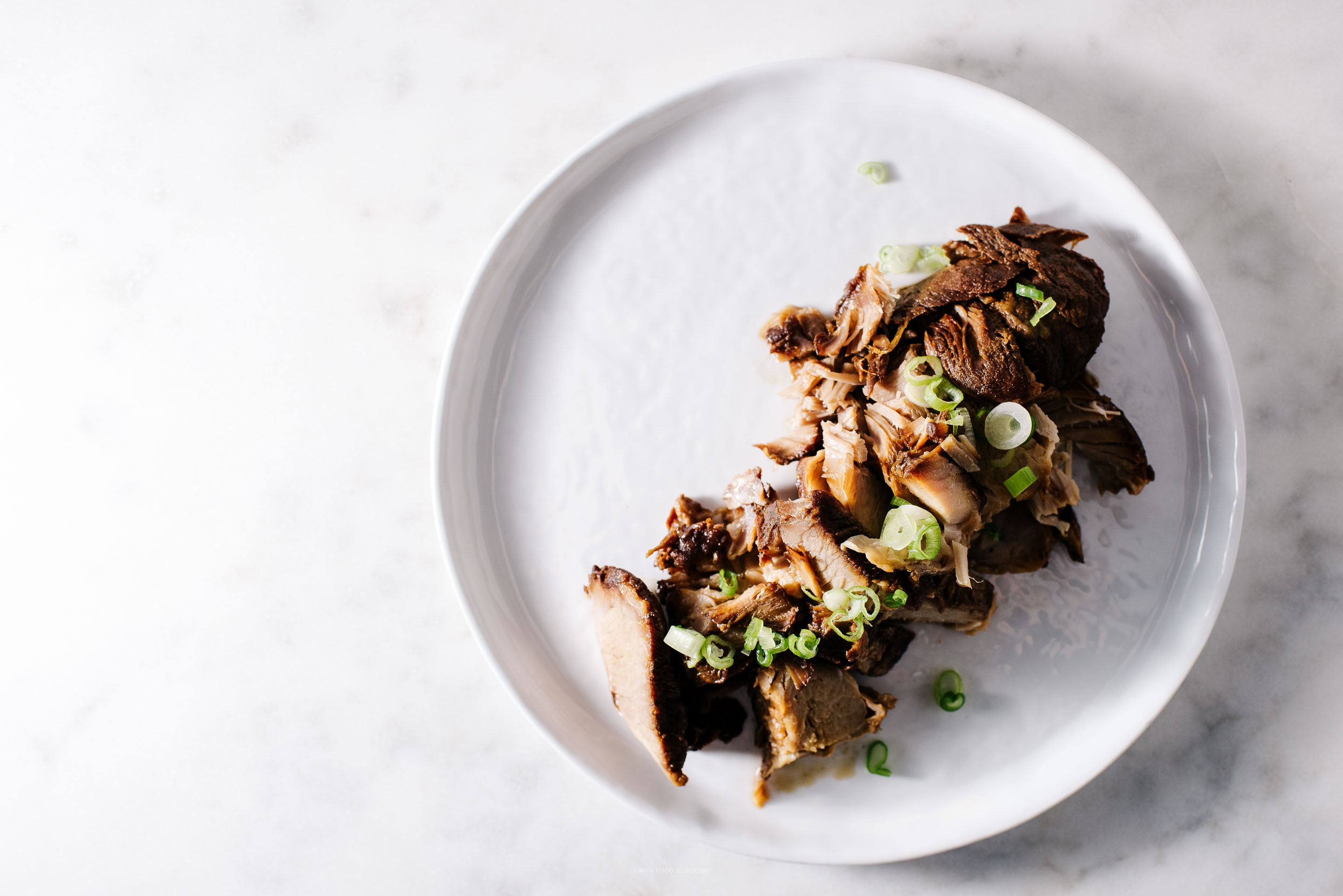
I get absurdly nostalgic around the holidays, even for things that happened just a year or two ago. I feel just as much for the memories formed just a short while ago (as short as last week!) as I feel for cherished, barely remembered childhood memories. I’m the sentimental sort – I cry at happy/sad commercials, I’m constantly taking photos in order to commemorate the everyday, and I am always reminiscing, sometimes even in the moment.
I’m pretty sure my sentimentality partially has to do my love of food. There’s something so visceral about the feelings and memories that flood back when you smell something familiar, or taste something strongly tied to a place or time. For the past two years Mike and I have spent Christmas in Tokyo, and now, because of all those bowls of ramen we ate, the smell and taste of slow braised Japanese chashu instantly bring me back to a Japanese Christmas-y feeling. The steamy windows of my favorite tiny ramen shop, the welcome enveloping smell of the broth, and the hot delicious bowls of noodles topped with chashu are pure comfort.
Chashu comes in all shapes and sizes, probably because the Japanese adapted it from char siu, Chinese barbecue pork. They don’t look anything alike because they aren’t: char siu is roasted, whereas chashu is braised. Because it’s one of those recipes that’s been adapted, there are lot of takes on it – you usually see it in rounds, but sometimes you’ll see it as irregular-shaped slices too. And it’s not just it’s shape that differs, the cut of meat does too. You’ll find it made with pork belly, which is super common, or with pork butt/shoulder. They even do chicken chashu as well!
I ended up using shoulder for this recipe and the chashu ended up super flavorful, soft, and fork tender. It was possibly the easiest piece of meat I ever did cook. It isn’t seared because you don’t want that typical crust you get with a braise; what you want is salty-sweet, melt-in-your-mouth pieces of meat. Trust me when I say you can eat heaps of it, along with the braising liquid, on fluffy white rice. It’s true comfort food.
I’m going to have some recipes featuring this pork later on this month, but in the mean time, you can use it to top off your breakfast ramen with chashu, use it in yakiudon, or add it to your fried rice.
PS – This is the first item in a giveaway series: I’m giving away a Staub 4 quart round cocotte! It’s the perfect vessel for making this chashu or other braises. I absolutely love mine and am super excited to be giving one away to a lucky reader. Only thing is, I’m not giving it away yet. Check back here in a couple of days when I’ll announce another giveaway item. It’s kind of like a little giveaway advent – there are five items in all and it’s a pretty exciting bundle!
Update: Enter the giveaway right here!
Slow Braised Japanese Chashu Pork Recipe
serves 4-6
- 2-3 pounds pork shoulder
- 1/2 cup soy sauce*
- 1 cup mirin
- 1 cup sake
- 1/4 cup sugar
- 6-8 cloves garlic, crushed
- 4-5 green onions
- 2 inch piece of ginger, peeled and sliced
- 2 small shallots, halved
Preheat the oven to 250°F.
Place all of the ingredients in a large, heavy-bottomed, oven safe cocotte and bring to a gentle boil over medium heat. When the mix comes to boil, cover with the lid and place in the oven and cook for minimum 4 hours, up to 6, flipping pork occasionally. The pork should be super tender.
Remove the pork from the sauce and, gently slice. Serve atop rice with sliced green onions, or use as a topping for ramen, or in steamed buns. Reserve the liquid to use as sauce over noodles or rice, if desired.
Note: You can either cut the pork shoulder into smaller pieces or leave it whole. I tend to cut it if I’m planning on serving it in buns or on noodles.
I used light soy sauce (usukuchi) here.
If you want a cleaner slice, remove the aromatics from the braising liquid. Chill the meat, in the liquid in the fridge. The next day, the chilled chashu will be a lot easier to slice.
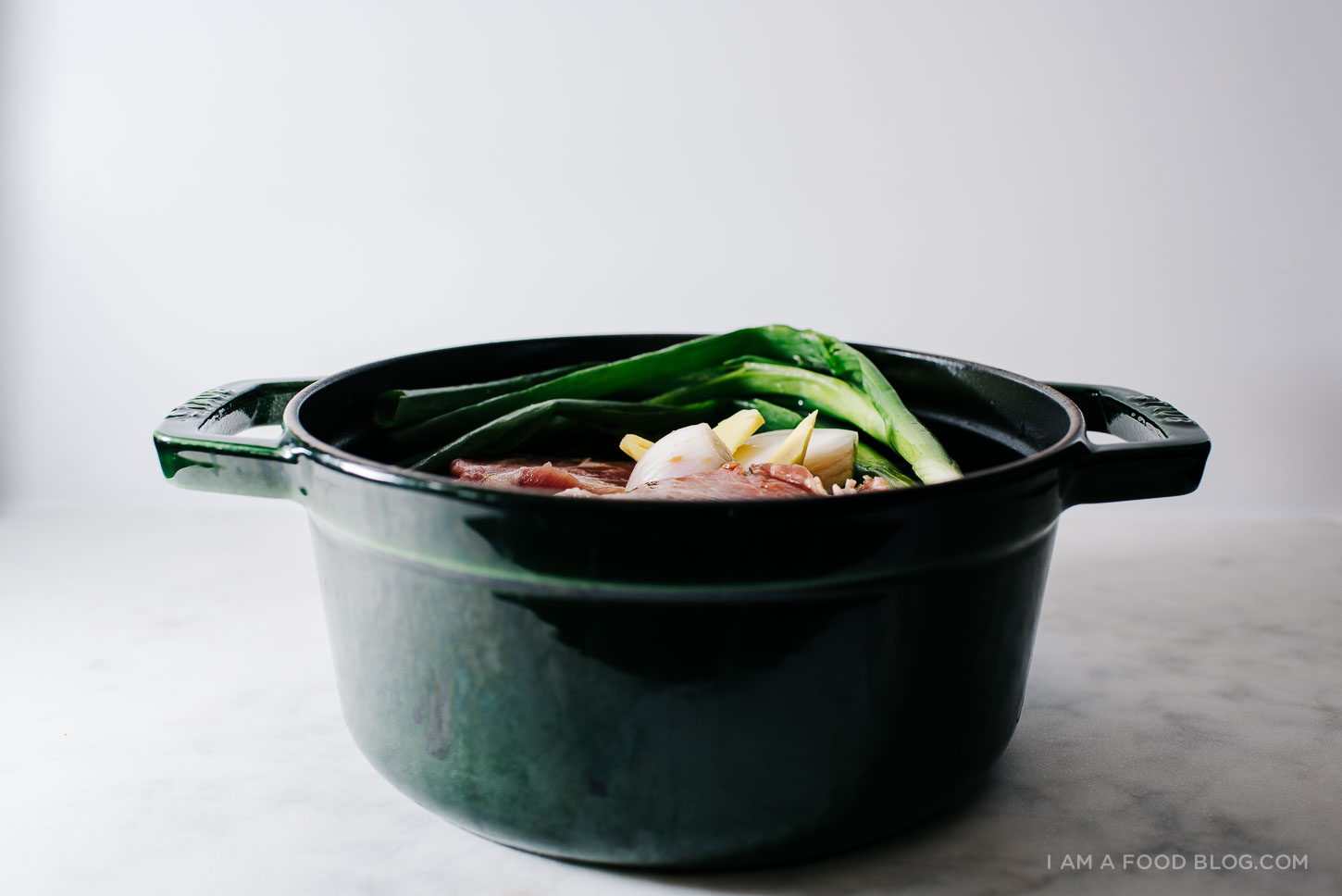

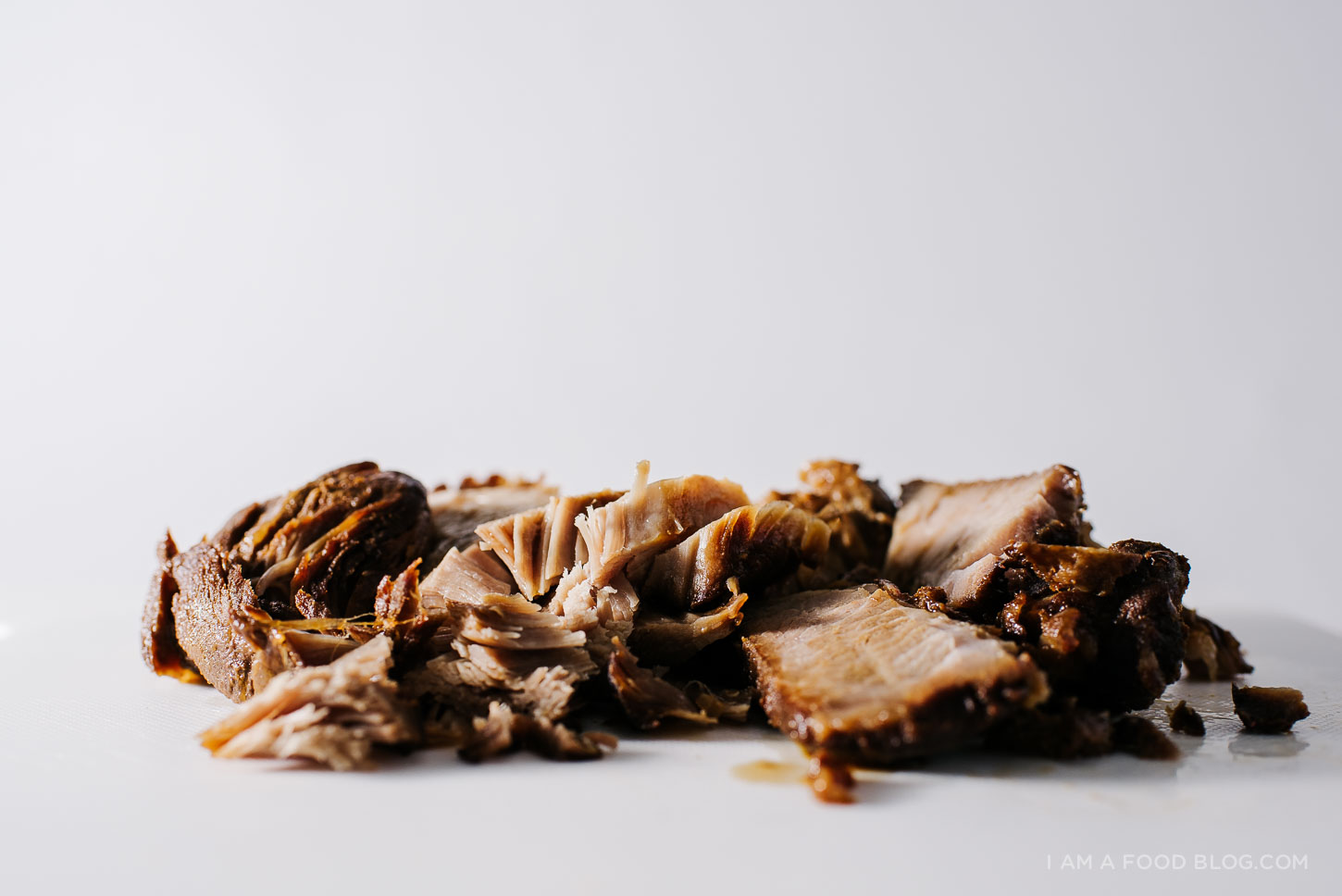
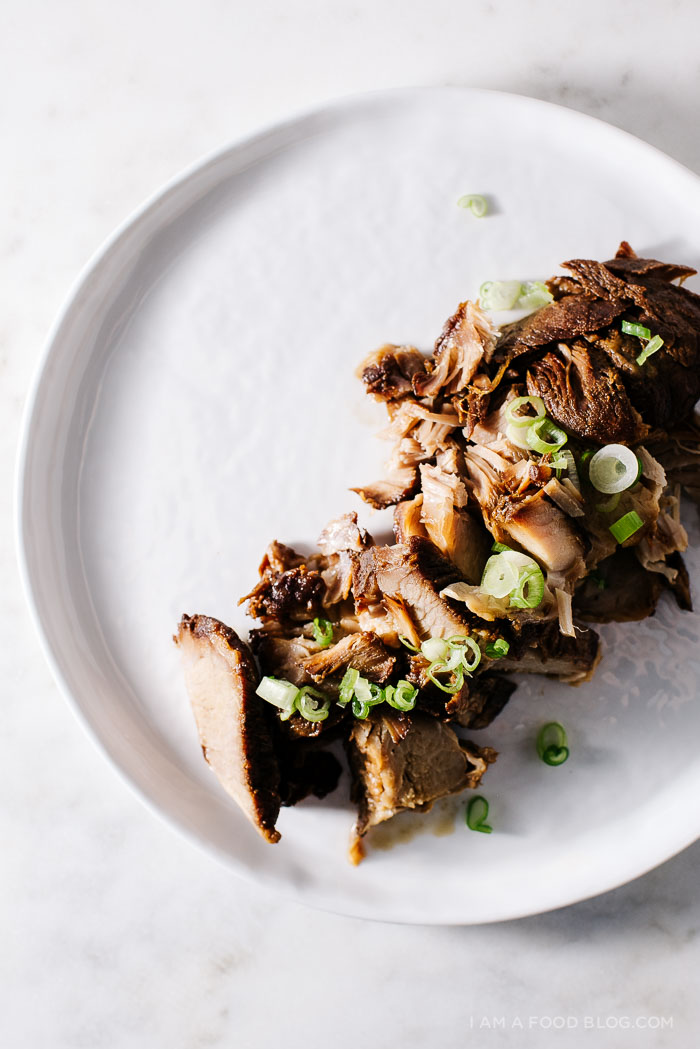
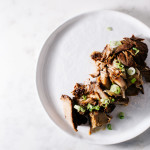
I’ve been making this recipe since I discovered your site, and it’s always fantastic. But I Just found out the mirin I’m using isnt “real” mirin. Do you have an recommendations for turning Sake into mirin? Thanks!
hey jacob,
making your own mirin at home is crazy difficult – i’m not sure how you’d control the alcohol content.they do sell “real mirin,” you just have to do a bit of searching, so i suggest buying it online!
Sorry to bring this back from the dead, but what type of soy sauce are you using? Koikuchi or Usukuchi?
it’s usukuchi! thanks for asking, i’ll update the recipe
I made it yesterday because we have a Japanese guest. And he said it is better than the one they gave in Japan. What a compliment. It so good with white rice or noodles. Thank you so much!!
Hi Stephanie!
If I have pork belly on hand, would you change the cooking time or anything else? I’d appreciate any advice thanks so much!!
hey ray, i think the cooking times should be okay but i would start checking it at around 2 hours to see if it’s tender enough for you and then go from there! hope that helps :)
Can this be made with beef
hi su,
i haven’t tried so i’m not sure what the timing would be on it!
anyone try this in an instant pot?
Hey,
Just wanted to let you know i’m using your receipe for the past 3 years and it turns to be one of my favorite food ever. Every time I need confort food, I go for this one. So thanks again for sharing :)
thank you so much manu! that makes me so happy, you have no idea :) thanks for taking the time to leave a comment too!
we love this chashu pork and make it frequently, its such an easy comforting meal! and it goes great as a topping for darn near everything- ramen, baked potato, heck we’ve put leftovers on burgers and hot dogs before too with a bit of kewpie mayo and its fantastic. we were thinking of making it in an instant pot for the first time since we’re craving it but not wanting to use the oven in the summer heat. has anyone tried it before that can give an idea of timing or if we should increase any of the flavorings? thanks in advance!
How come there is no mention of searing this meat ever? A good sear at the beginning or the end could never hurt right?
hi,
you can definitely sear it, but classically, it’s super tender and un-seared!